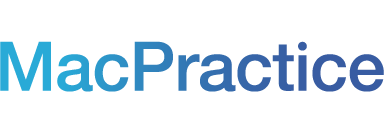Editor's Note: This post is about future Apple developments. Never update to a new OS or iOS version until MacPractice and any third party vendors have announced a compatible version of your software or hardware drivers.
Each year, the Apple Worldwide Developers Conference (WWDC) brings highly anticipated announcements of upcoming Apple technologies to the global community of Apple developers and consumers. Software reigned at this year's WWDC14 event, which introduced two new operating systems: iOS8 and OS X Yosemite. Apple has re-envisioned their product environment, connecting mobile devices and desktop devices with features like Continuity, which allows users to seamlessly select the right device for the right moment.
For many Apple developers, a highlight was the introduction of Swift, a programming language years in the making and set to replace Objective-C, the programming language in which MacPractice is largely written. “I look forward to bringing Swift into the codebase,†said MacPractice Engineer Daniel Bergquist. “Swift has a number of interesting features that Objective-C, Apple's existing programming languages, didn't have. This gives developers new and powerful ways to express their ideas in code.â€
Among the announcements most exciting to Healthcare developers was the brief introduction to HealthKit and Health, the companion consumer app. HealthKit allows health data apps to share data. Apps using the HealthKit framework can collect and analyze patient generated health data (PGHD). HealthKit provides a venue for apps to contribute to a composite profile of patient health information, potentially linking patient generated data from consumer health tracking apps into the patient-provider relationship. Healthcare developers, like Mayo Health Clinic, will be able to receive notifications on patient health readings, such as blood pressure. When data is out of line with the patient's metrics, apps can notify the patient's healthcare team. Mayo Clinic CEO Dr. John H. Noseworthy was quoted, “HealthKit will revolutionize how the health industry interacts with people.â€
One challenge to adoption of HealthKit is that the optimal use of PGHD as a viable health care tool is not yet widely established in the healthcare industry. The Office of the National Coordinator for Health IT (ONC) released a 2013 Issue Brief outlining use cases and best practices for using PHGD, as well as identifying oppositions for patient, provider, and EHR vendor adoption. Providers have expressed concern in using PGHD, pointing out that not all patient health data is created equally. PGHD and data collected in a clinical setting through a provider encounter need to be understood and integrated with the EHR, patient portals, or other devices in a structured and useful way without inundating providers with irrelevant information or creating an overly complex workflow.
MacPractice has leveraged patient generated health data since the release of MacPractice Clipboard for iPad in 2012. PGHD (demographics, medical history, social history, and so on) is entered by the patient through the app as structured data, which can then be integrated to a patient's health record during a clinical review using the iEHR app for iPad during a provider encounter. The data is structured within form sections, and the form name, date, specific data, and user who created the data are displayed to aid in clinical review. Clinical staff are always prompted to confirm patient generated health data before adding that data to a patient's health record. PGHD is made relevant within the context of the encounter so that a provider is able to appropriately harness the influx of information without interference to quality patient care.
Apple has released a library of video content from WWDC14, which can be found here.
[Image courtesy of Apple]
